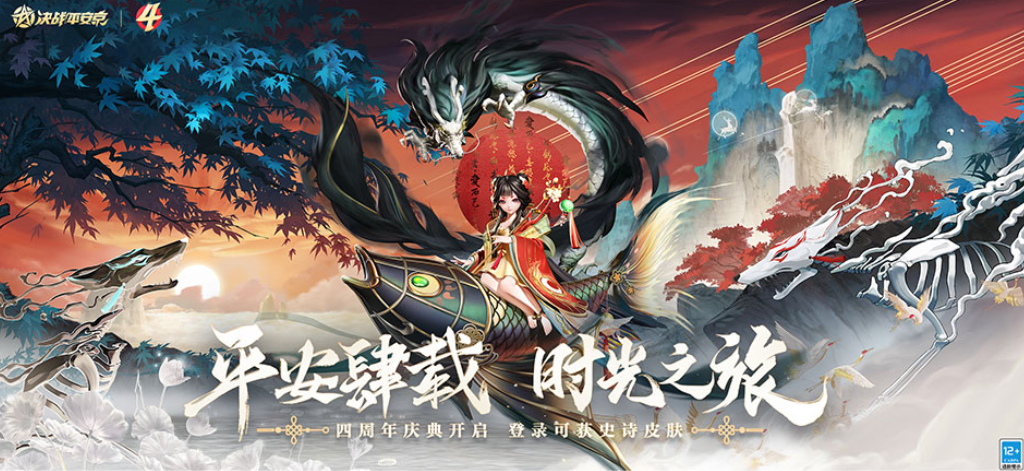The Asian leaders in tech have taken the world by storm with gadgets, games, and inventions that are termed 'futuristic' given their ahead-of-time design, user experience, and technology. What goes into making these is not an unusual secret, but hardworking individuals who are work-driven to the point that they live, breathe, and celebrate innovation in every aspect of life. The global popularity of the multiplayer battle game Onmyoji Arena, which topped the charts and became among the best sellers after its iOS version release, has not gone unnoticed, and the team behind its creation has received praise for their work. Among them is Shanshan He, an environmental artist whose role has yet to be widely comprehended and acknowledged by the public. She appeared for an interview to discuss her role in the game's production.
Despite still being considered an exception of a career choice for women, Shanshan always knew she'd become an integral part of tech. Now, she has delivered successful projects featuring films and games, becoming the epitome of how women in tech are changing the world for the better. Her diverse portfolio reflects her extensive skill set and talent. Her appointment as Senior Illustrator with the Walt Disney Studio for the worldwide famous franchise of The Lion King: Mufasa marked a significant leap in her career, after which she became a prominent part of the production industry.
She then moved on to become the lead environment artist at NetEast Game, where she eventually worked on the Onmyoji Arena game. She joined a team of tech-savvy individuals working to bring a battleground multiplayer game set in Japan. Japan's rich culture of heroism and mythology, full of memorable characters, provided the basis for the idea for the game. The idea was also an extrapolation of the proliferation of anime cartoons across the globe. The Asian representation in the game added to the stronger storyline and better characters.
Shanshan's role involved working closely with everyone and ensuring the perfect setting for the game. In the year it was released, Onmyoji Arena generated a whopping $100 million in annual revenue. "I have to simplify my work in order to explain it to people. There is so much that goes into making games and animated films. Creating visuals that translate the idea into reality remains at the core of her work and perhaps the most challenging aspect of it," shared Shanshan.
Creating 3D environments for game production usually does not ensure a smooth user experience on phones, and as a result, most scenes have to be converted to 2D. The conversion to 2D textures improves the overall gaming experience for users. Shanshan devised a similar strategy for producing Onmyoji Arena, opting for 2D textures that consume much less processing power and memory than 3D, enabling the game to run smoothly on any phone. This innovative use of technology also significantly contributed to the successful marketing of the product. Multiplayer battleground games usually require specific mobile features and sometimes hefty consoles, but Onmyoji Arena broke the internet by providing the same quality and level of play on all phones.
2D textures also have a production benefit for the team. They are easier to manage, alter, or change and require fewer resources. Shanshan's strategy helped speed up the production process without requiring additional finances or allocating time-consuming, logistically stringent resources. Time remains the most challenging part of the artist's job when creating games. Despite the fast-paced process, which rarely allows for the testing of creative ideas, Shanshan asserts that it has been within these time constraints that she has been able to test new technologies and strategies in gaming and filmmaking successfully. The reduced margin of error brings out the best in the artists; for her, it is about more than achieving perfect artistic effects; it is about creating them with the limited resources available.
"You can probably achieve anything with an unlimited budget, but I think it takes away from the creativity of an environmental artist because, with everything in hand, I don't see the exciting element," added Shanshan. Being part of this journey was also a learning experience for the artist. When asked how working on game projects differs from the films, she shared, "In game production, some steps are rarely used in the film due to performance considerations, such as tiling UVs. We need to bake a high-poly version of every model into a low-poly version and use 2D decals as much as possible."
Over time, the Asian has consistently proven herself and honed her skills. She enjoys the opportunities coming her way and looks forward to being part of many more big-scale projects. On a personal note, Shanshan remains reserved and does not like to be in the spotlight on social media. She lets her work speak for her.
To keep up with Shanshan, check out her social media at:
https://www.artstation.com/shanshanhe_1218
https://www.linkedin.com/in/shanshan-he-66b5b7156/
Fame Media
www.famemediaus.com
Writer Sherry Lee,
Hollywood Legends Editor-in-Chief
